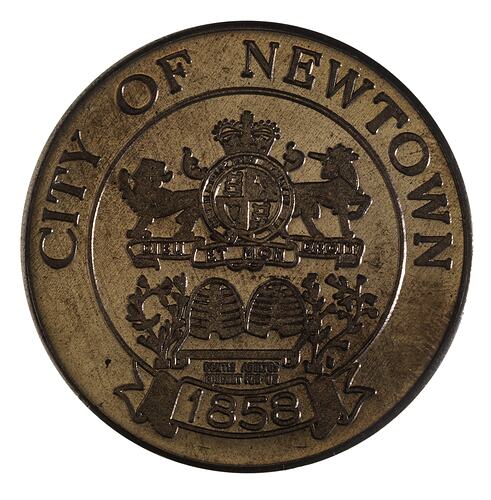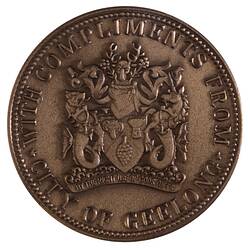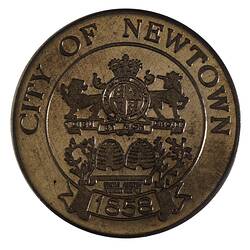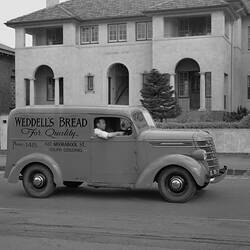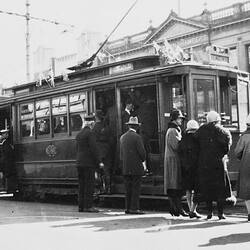Newtown is situated in Greater Geelong, inland from Corio Bay and bordered to the south and west by the Barwon River. Geelong West and Monifold Heights are located on its northern border, and Geelong and South Geelong to the east.
In June 1835 John Batman crossed Bass Strait from Tasmania and took lands from local First Peoples. The western boundary of Batman's treaty land included the Geelong area. Seventeen months later two of Geelong's earliest settlers, John Cowie and David Stead, came from Tasmania to the Geelong district to depasture sheep. Early in 1837 a pioneer Geelong citizen, Dr Alexander Thomson, settled at the future Geelong suburb, Belmont, and established his Kardinia estate overlooking the Barwon River, just south of the future Newtown. In 1838 the shipping activities caused a customs house to be erected. Geelong was surveyed in 1839 and land sales were conducted. The sandbar blocking access past Point Henry was successfully passed over, and cargo movements were henceforth shared between Point Henry and the Geelong waterfront. Industry began to develop, including flour mills and tallow works, and vineyards were established. The Geelong town council was incorporated in October 1849.
The Newtown area of Geelong saw dramatic growth during the gold rushes, as the city was a major gateway to the goldfields. A shortage of housing saw a large number of portable or prefabricated houses imported to Geelong in the early 1850s by local merchant Frederick Bauer and others.
Houses for financially successful members of the community were also constructed. Between 1853-56 Geelong solicitor John Alexander Gregory built an 18 room stone mansion, 'Barwon Bank', in extensive gardens on the high northern bank overlooking the Barwon River. This colonial regency-style building was designed by T. R. Yabsley and built of basalt with contrasting Barrabool freestone dressings, dominated by a massive Doric portico. Merchant Jonathan Porter O'Brien and his wife Ann built a timber house, then in 1856 a brick house, which they named 'Barwon Grange', situated on the banks of the Barwon River. Successful Geelong grocer William Blairlaremont erected a single storey Italian Renaissance revival villa, designed by the engineer Andrew McWilliams and constructed sometime between 1858 and 1861. Prominent Geelong pharmacist and politician Charles Kernot erected Renaissance Revival-style house in 1857-58. Pioneer George Armytage built 'The Hermitage', one of the finest Colonial Regency style mansion houses in Victoria. Edward Prowse, architect, designed this two storey Colonial Regency style mansion for and had it built from Barrabool freestone ashlar and basalt rubble. It was completed in 1860.
The community's religious needs were met with an enthusiastic spate of church-building. A Baptist church was erected in 1853 from designs prepared by Geelong architect John Young and opened on 17 February 1854. The Noble Street Wesleyan Methodist Church was built in 1854 by Pile and Brimblecombe to replace an earlier structure. The same year another church was built, this time from Barrabool stone, replaced in 1876 by the Aberdeen Street Baptist church, a substantial polychromatic brick and stone Victorian Gothic church designed by Thomas Watts.
In 1855 the Catholic church acquired the single-storey substantial house, 'Sunville', built about 1850 for J. W. Belcher. The Sacred Heart Convent of Mercy was established there 1859-60, and in 1864 J. L. Shaw, Geelong architect, designed an orphanage building for the site. A boarding school was added in 1869, and a new convent building was erected from 1872-74, designed by noted church architect T. A. Kelly.
In 1858 the Borough of Newtown was created, when it separated from Geelong. Geelong's future was being curtailed like that of Melbourne, with the creation of closely adjacent road districts and suburban councils.
In 1861 Rev. Alexander James Campbell, the first Minister of St. George's Presbyterian Church, expressed concern about the lack of educational opportunities in Geelong. A committee was formed which resolved to establish a school under the auspices of the Presbyterian Church of Victoria. The Geelong College was formally established on 8 July 1861 at Knowle House in Skene Street, Newtown with an enrolment of 40 pupils. By 1871 a purpose-built school was ready, but needed extending almost immediately.
Newtown's first tramway opened in 1912.
In 1924 the Town of Newtown and Chilwell was created; in 1949 it became a City. In 1967 the City of Newton was created.
Newtown City Council issued a medal to commemorate Victoria's sesquicentenary in 1985 [NU 20678].
On 18 May 1993 the Greater Geelong City Council was Created by Order of the Governor from the Cities of Newtown, Geelong and Geelong West and the Rural City of Bellarine, the Shires of Corio and South Barwon and parts of the Shires of Bannockburn and Barrabool.
References:
Victorian Heritage Register On-Line http://www.doi.vic.gov.au/doi/hvolr.nsf
Australian Places website, Monash University, http://arts.monash.edu/ncas/multimedia/gazetteer/list/geelong.html
Blake, L. (1977). Place Names of Victoria.
More Information
-
Keywords
-
Localities
-
Authors
-
Article types
